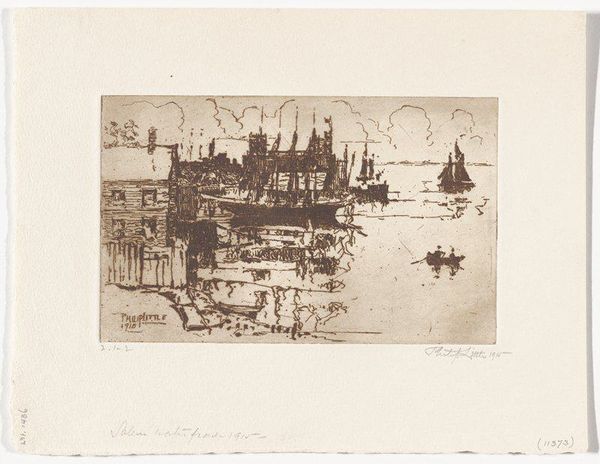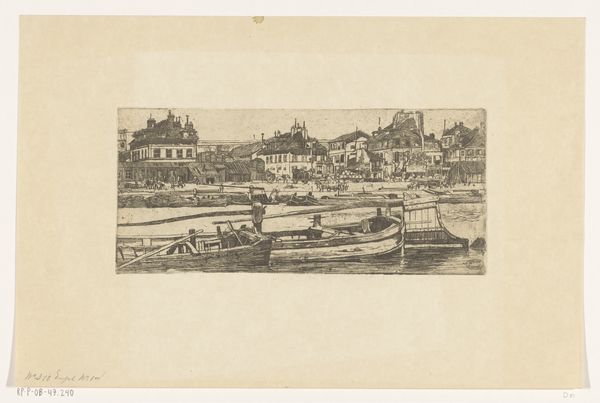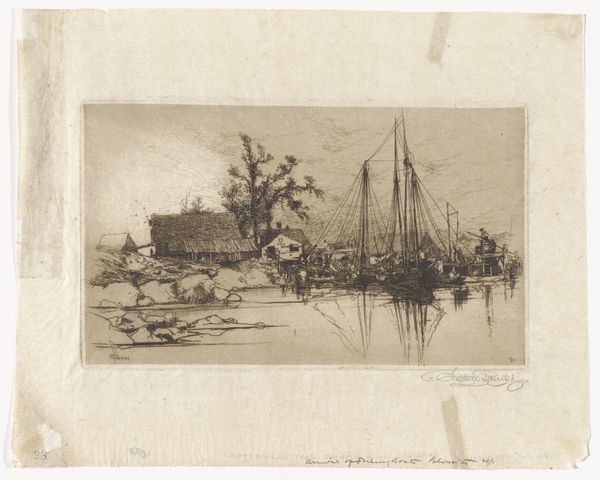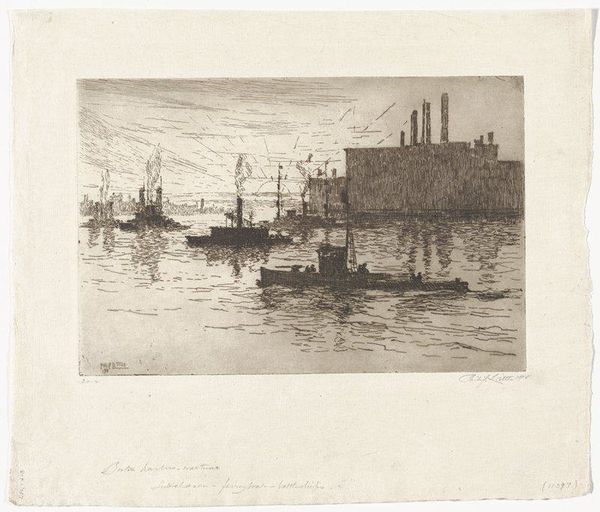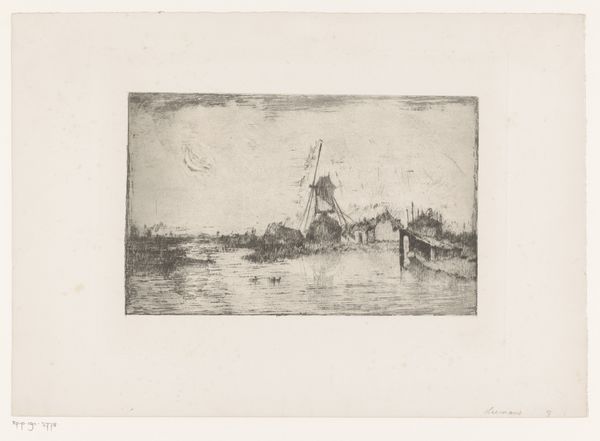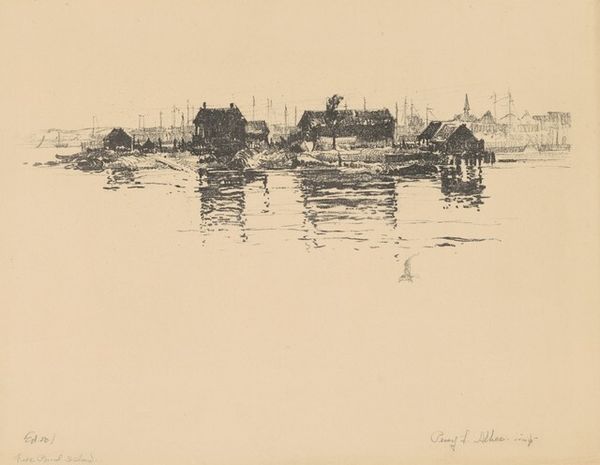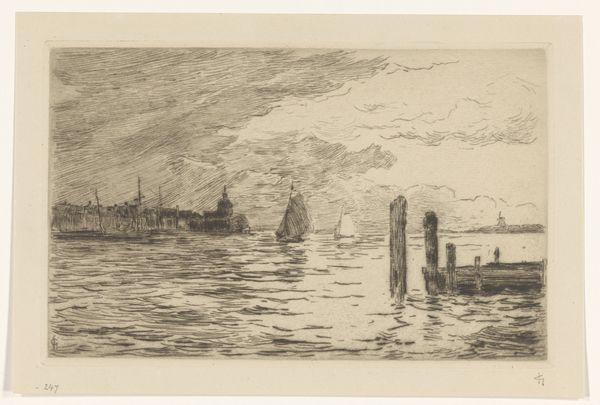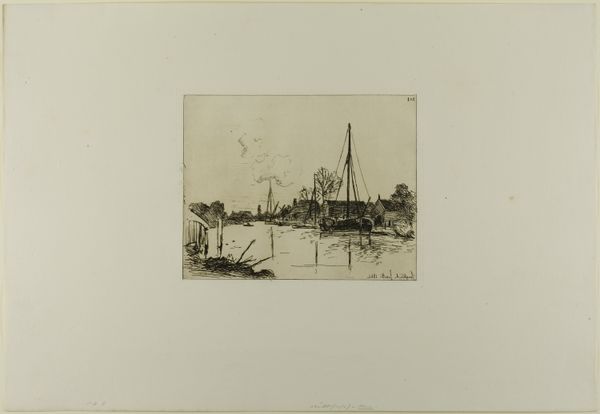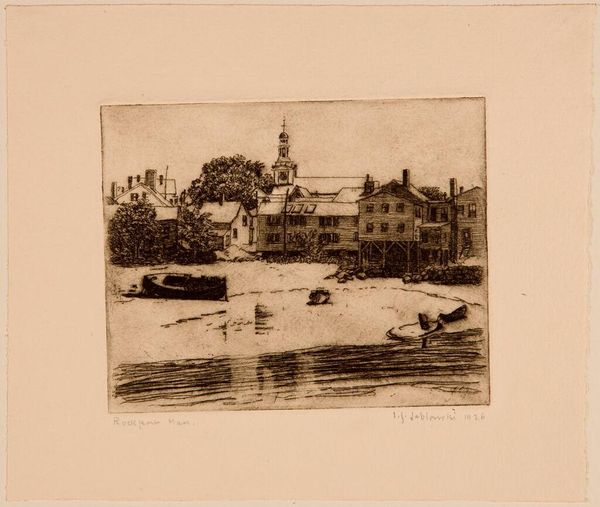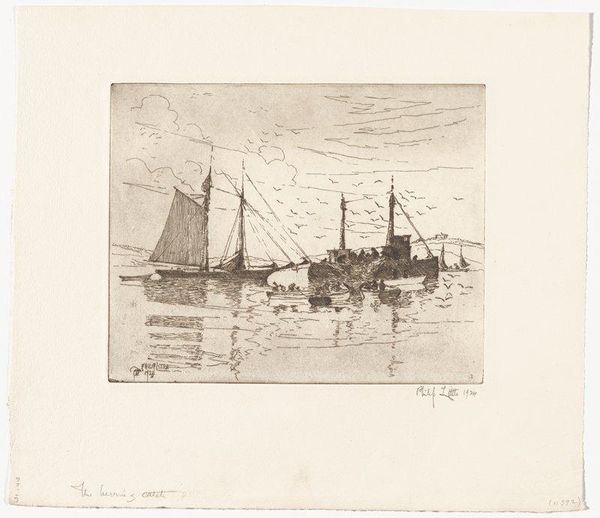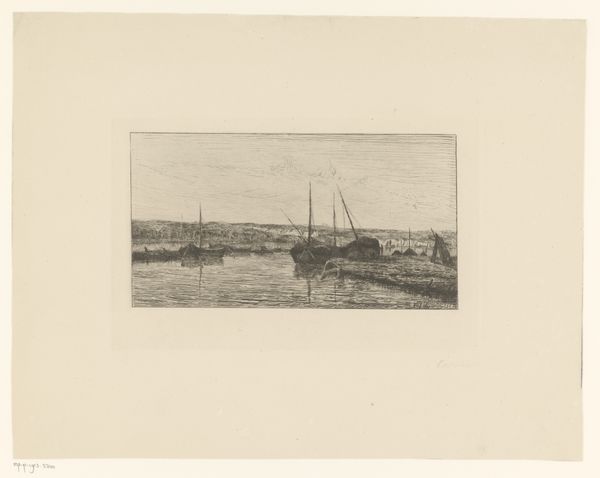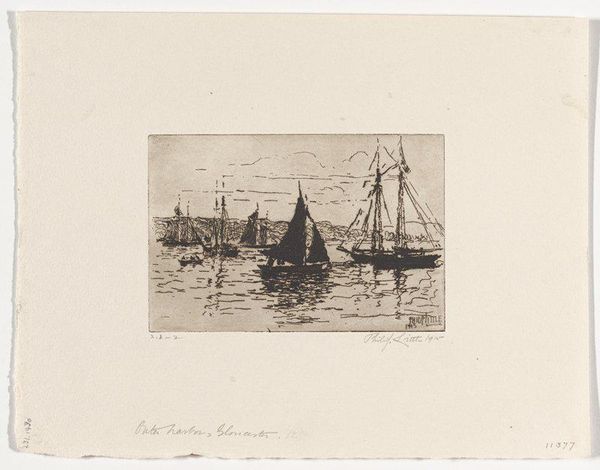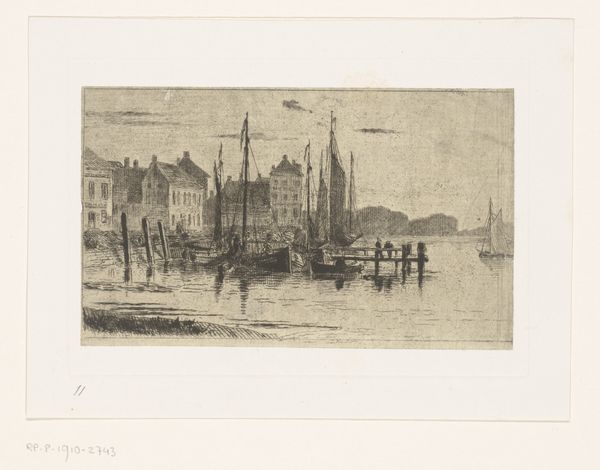
Dimensions: 4 15/16 x 7 15/16 in. (12.54 x 20.16 cm) (plate)8 3/4 x 11 7/16 in. (22.23 x 29.05 cm) (sheet)
Copyright: No Copyright - United States
Curator: This is Philip Little's "Salem Harbor in Winter," an etching from 1915 currently held at the Minneapolis Institute of Art. Editor: The chill is almost palpable. It's monochrome, delicate lines suggesting ice and hushed activity. It feels both still and fraught with hidden energy. Curator: It is interesting how the etching, as a medium, contributes to the sense of sparseness. It brings forward so much to our attention considering that during this period, Salem, Massachusetts, was moving beyond its famous past and reckoning with modernity. Editor: The reflections on the water feel central. They carry centuries of trade and maritime life but are now disturbed by the small boats in the harbor. Do the reflections mean to speak of more than what's merely on the water's surface? I see echoes of history and promise in them. Curator: Absolutely. It prompts questions of societal shifts within port towns. The buildings in the backdrop are more established; whereas the boats represent movement, immigration, and commerce – all significant shifts for Salem during the early 20th century as its textile factories changed labor dynamics. Editor: The symbolism resonates powerfully: The town and the factories hold the burden of history but they give off so little light compared to what glitters upon the moving water. I see both cultural weight and social struggle. Curator: Indeed, in art historical discourse, landscapes of this kind reflect tensions inherent in the juxtaposition of progress with long-standing traditions of earlier centuries. The winter aspect is significant, implying harsh conditions and survival, especially for women textile workers who dealt with seasonal work shortages. Editor: To me, there’s also a quiet acceptance of nature's indifference in that portrayal. But isn't there an acknowledgement, too, that through continuous motion, as represented in those moving boats, there is continuous life? It's a striking depiction of adaptation within what might otherwise seem stark. Curator: Little offers us this through landscape etching in ways that invite contemplation about labor relations. What can prints like these illuminate about our continued historical legacies? Editor: It speaks volumes on how the language of the city carries echoes for our contemporary conversations. The artist helps us remember these historical legacies by embedding cultural continuity within fleeting impressions.
Comments
No comments
Be the first to comment and join the conversation on the ultimate creative platform.
